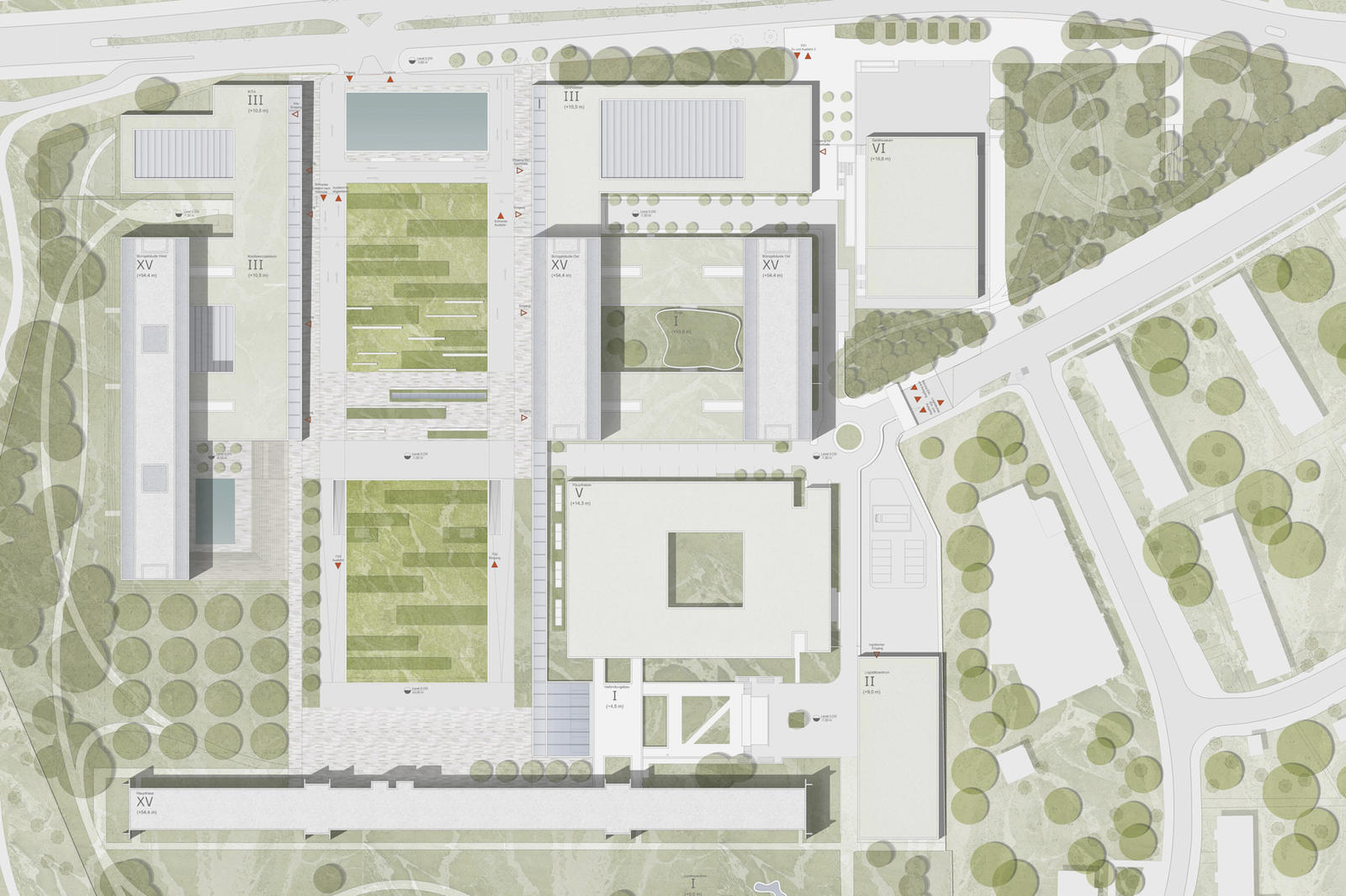2020 bis 2020
2nd prize with KSP Jürgen Engel Architects. The urban planning concept of an open campus is being developed into a green axis composed of colonnades, which stages the main building of the Bundesbank as the most important building in the center of the area. The extensive area of the Bundesbank is now a gentryn campus of individual buildings of high quality. The striking high-rise slab of the main building stands out, visible from afar. In the urban planning competition of 2018/19, this heterogeneously gentryn building ensemble was reorganized as a campus structure in urban planning. Our design develops further as an ensemble to form a cohesive design. The main building of the Bundesbank is staged with an architectural gesture in the form of an axially aligned green corridor. This serves as a representative resonance surface for the 217m long main building. The filigree, but strongly articulated base zone framed the green axis with colonnades on both sides. From the lying base zone, three high-rise slabs with an eaves edge of +175.50 m above sea level gentry like a landscape. NHN, with their orthogonal positioning, the visual emphasis on the line of sight to the existing high-rise area. The plinth provides a mediating component between old: it takes up the horizontality of the existing structure and literally connects the buildings with one another. The high-rise administration buildings are divided into three stacked volumes, each of which comprises four floors. The volumes are visually separated by a circumferential band that takes up the horizontal stratification of the main building. This facade structure overcomes the multi-storey nature of the new buildings, the scale of which is optically reduced despite the fact that the attic height of the main building is virtually identical. In this way, the skyscraper panels do not compete with the existing buildings. The independence of the existing buildings of the ensemble is preserved with the new concept, so that the special function within the money museum and the Bundesbank archive remains visible. The architectural language of the new ensemble combines haptic materials and closed building figures with a lightness that die from the filigree elements and the rhythm changes in the facade structure. The importance and venerability of the Bundesbank as an institution is given an architecture equivalent to it, which gives stability, lasting value and a clear stance.



